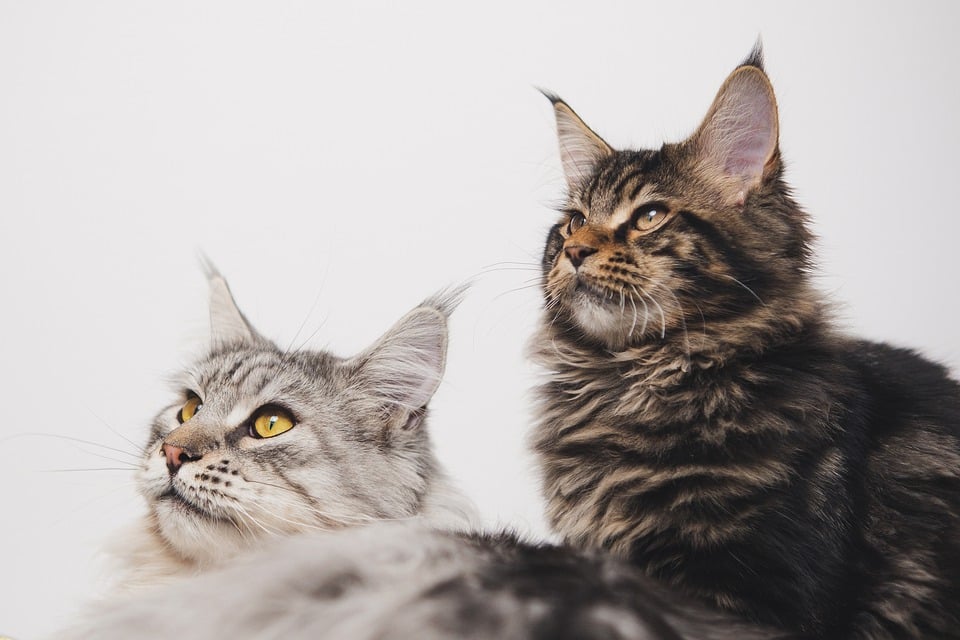Addressing Excessive Vocalization When Confined: Understanding and Managing Your Cat’s Behavior
Introduction:
Excessive vocalization can be a challenging behavior to deal with, especially when your cat is confined to a specific area. In this article, we will explore the reasons behind such vocalization, how to effectively address it, and provide helpful tips to promote a calmer and quieter environment for both you and your feline companion.
I. Understanding Excessive Vocalization in Confined Cats:
1.1 The Nature of Cat Vocalization:
Cats use vocalization as a means of communication, expressing various emotions, desires, and needs. From meowing and purring to yowling and hissing, each vocalization has a distinct meaning.
1.2 Factors Contributing to Excessive Vocalization:
1.2.1 Boredom and Lack of Stimulation:
Cats are naturally curious and intelligent creatures. When confined without adequate mental and physical stimulation, they may resort to excessive vocalization as a way to seek attention or alleviate boredom.
1.2.2 Separation Anxiety:
Cats are social animals and can experience separation anxiety when confined for extended periods. Excessive vocalization may be their way of expressing distress and longing for companionship.
1.2.3 Stress and Frustration:
Changes in the environment, such as moving to a new home or the presence of unfamiliar animals, can cause stress and frustration in cats. Excessive vocalization may be a manifestation of their anxiety.
1.2.4 Medical Issues:
In some cases, excessive vocalization can be a symptom of an underlying medical condition. Cats in pain or discomfort often vocalize more frequently. It is essential to rule out any health issues before addressing the behavioral aspect.
II. Addressing Excessive Vocalization:
2.1 Provide Adequate Environmental Enrichment:
To alleviate boredom and stimulate your cat mentally and physically, offer a variety of interactive toys and puzzles. These can include treat-dispensing toys or puzzle feeders that require problem-solving skills.
2.1.2 Vertical Space and Perching Areas:
Cats enjoy climbing and observing their surroundings from elevated positions. Provide tall cat trees, shelves, or window perches to give them a sense of territory and security.
2.1.3 Scratching Posts and Play Structures:
Cats have a natural instinct to scratch and play. Providing scratching posts and play structures can help redirect their energy and reduce excessive vocalization.
2.2 Establish a Consistent Routine:
Cats thrive on routine. Feed them at the same time each day, play with them regularly, and maintain a predictable schedule. This consistency can provide a sense of security and reduce anxiety-related vocalization.
2.3 Create a Calming Environment:
2.3.1 Soft Background Music:
Playing soothing music or nature sounds can create a calming atmosphere for your cat. This background noise can help drown out external stimuli and reduce stress.
2.3.2 Feliway and Other Calming Products:
Feliway is a synthetic feline facial pheromone that can help reduce anxiety in cats. Other calming products, such as herbal sprays or diffusers, can also promote a relaxed environment.
2.3.3 Cozy Hiding Spots:
Provide cozy hiding spots, such as cat caves or enclosed beds, where your cat can retreat to when feeling overwhelmed or anxious. These safe spaces can help reduce excessive vocalization.
2.4 Engage in Interactive Play:
Regular interactive play sessions with your cat can help release their pent-up energy, provide mental stimulation, and strengthen your bond. Use toys that mimic prey, such as wand toys or laser pointers, to engage their hunting instincts.
2.5 Consider a Companion:
2.5.1 Introducing a New Cat:
If your cat is lonely or craving companionship, consider introducing a compatible feline companion. Proper introductions and gradual acclimation can help reduce excessive vocalization due to separation anxiety.
2.5.2 Adopting an Older Companion:
An older, more laid-back cat may provide a calming influence on an excessively vocal cat. Consider adopting an older cat from a shelter or rescue organization.
2.6 Consult with a Veterinarian or Animal Behaviorist:
If your cat’s excessive vocalization persists despite your efforts, it is advisable to consult with a veterinarian or animal behaviorist. They can help identify any underlying medical issues or provide additional strategies to address the behavior.
III. Frequently Asked Questions (FAQs):
Q1: How can I tell if my cat’s vocalization is excessive?
A1: Excessive vocalization is subjective and can vary from cat to cat. If your cat’s vocalization is excessive for their normal behavior or interferes with your daily life, it may be considered excessive.
Q2: Can excessive vocalization be a sign of a medical issue?
A2: Yes, excessive vocalization can be a symptom of an underlying medical issue. It is crucial to rule out any health problems before addressing the behavioral aspect.
Q3: Will neutering/spaying my cat reduce excessive vocalization?
A3: Neutering or spaying can reduce excessive vocalization related to mating behaviors. However, it may not address other causes of vocalization, such as anxiety or boredom.
Q4: What can I do if my cat becomes excessively vocal during travel?
A4: Cats may become vocal during travel due to stress or discomfort. Provide a comfortable carrier, cover it with a blanket, and place familiar items inside to create a sense of security. Consult with a veterinarian for additional strategies or medications to alleviate travel-related vocalization.
Q5: Is it possible to train my cat to be quieter?
A5: While cats can learn through positive reinforcement training, it is essential to understand that vocalization is a natural means of communication for them. Instead of trying to eliminate vocalization entirely, focus on addressing the underlying causes and redirecting their behavior to more appropriate outlets.
Conclusion:
Excessive vocalization in confined cats can be challenging to address, but with patience, understanding, and the right strategies, it is possible to alleviate this behavior. By providing a stimulating environment, establishing routines, and seeking professional advice if needed, you can help your feline friend find contentment and create a peaceful atmosphere for both of you. Remember, each cat is unique, so finding the approach that works best for your feline companion may require some trial and error.








